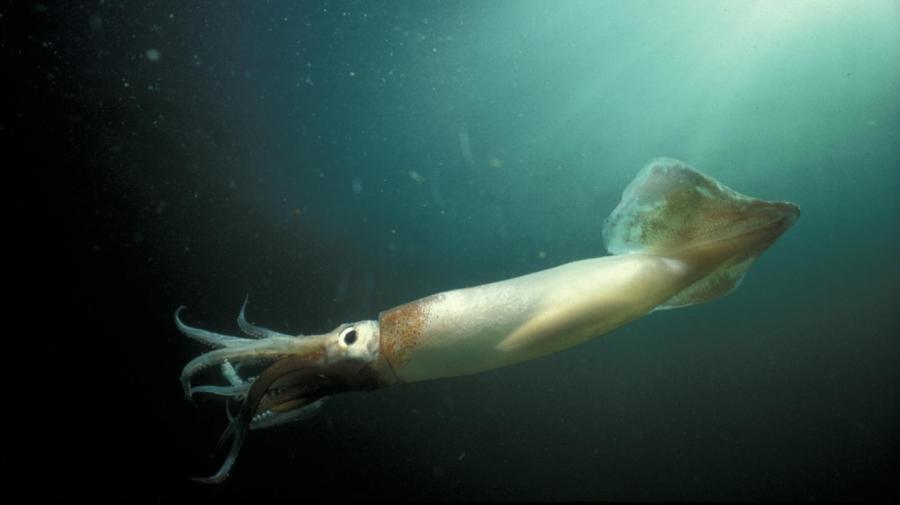How Do Squid Breathe?

Squid breathe by drawing water through their siphons into their mantles, the large muscular coverings over their bodies, where it passes over their two sets of gill filaments, absorbing oxygen and releasing carbon dioxide via diffusion. The blood that absorbs the oxygen uses a copper compound, haemocyanin, rather than the iron-containing hemoglobin of mammals. The blood is pumped to the gills from two branchial hearts and elsewhere by a third.
Because of its copper-based blood, squid blood is blue, not red. This blood is pumped by three hearts. The two branchial hearts pump blood to the gills, much like the right ventricle pumps blood to mammalian lungs. The third heart, the systemic heart, draws in oxygenated blood from the gills with two atria and pumps it from a single ventricle to the rest of the body.
The ability of squid to draw water into their mantles and force it out again is not just useful for breathing. It is also a main method of propulsion. Squid practice a method of movement known as jetting, literally using jets of water pumped out by their powerful mantles to push themselves along at considerable speeds. There are even squid that use jetting to briefly exit the water and glide through the air to avoid predators.





